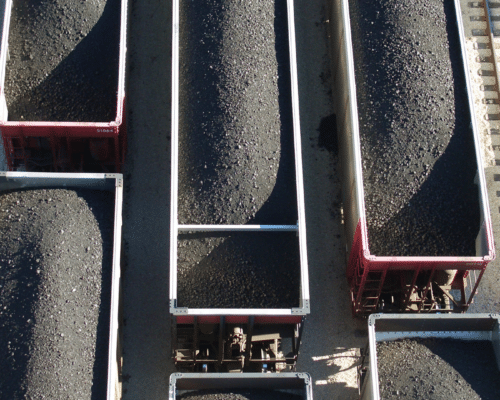The Role of Coal in China’s Path to Net-Zero Emissions
01 December 2021 – by Eric Koons Comments (0)
China has set a goal of being net-zero by 2060. China is arguably a land of contradictions. It finds itself in an awkward position of being the globe’s largest carbon emissions emitter and the globe’s frontrunner in clean technologies. This new push into cleaner tech is part of China’s ultimate plan on reaching net-zero emissions by 2060. To achieve carbon neutrality by 2060, China will need to reduce greenhouse gas emissions and fossil fuel consumption. Wind and solar power are the best alternatives to fossil fuels. To reduce carbon emissions and limit global warming, China is taking a proactive approach with this net-zero plan.
China’s Impact at COP26
Yet, recently at COP26, China seemed to take a less outspoken stance on climate change and appeared somewhat reserved. Xi Jinping, China’s President, did not attend the event and remained vague in his video address to the conference. He called for more decisive action on climate change and more assistance for developing countries. As important as those two points may be, they are well established and bring nothing new to the table.
No New Carbon Emissions or Renewable Energy Commitments
To add to the perplexing situation, China did not pledge any additional climate change or global warming commitments. This surprised many that assumed China would take a firmer stance on the matter. For critics, it raised questions about China’s seriousness and whether they can meet their climate targets.
In Context – Pre COP26
Looking back, however, China has actively sought to decarbonise its economy over the last several years. For a long time, the nation’s economic growth aligned with local environmental degradation. At the turn of the millennium, this changed. The change was followed by activities to fulfil the UN’s Sustainable Development Goals – and now its commitments to meet net-zero emissions by 2060.

“China’s economic growth has not come without great sacrifice and with negative consequences for the environment and climate,” said Deliang Chen, a professor of physical meteorology at the University of Gothenburg. “But it is still encouraging to note these improvements.”
Peak Carbon Emissions
Aware of its greenhouse gases emissions and seeking to curb them, China acknowledges that its carbon emissions are yet to peak. The situation is paradoxical, as China is the world leader in climate-friendly investments. It is already the largest EV manufacturer and also slowly grasping at a monopoly of EV-related materials supply chains. China, with its ability to rapidly enact social change, could be an unlikely success story.
Repercussions of China’s Coal Pledge on Asian Economies
Read moreChina’s Net-Zero Target – Models and Feasibility
While China’s short-term energy policy heavily leans on coal, fossil fuels will play an inevitable role in the country’s energy mix for decades. Its current goals are to reduce energy intensity by 13.5% by 2025 while reducing carbon emissions per unit of GDP by 18%. In reality, achieving this requires a combination of reduced coal consumption and increased renewable energy use.
Progress so far indicates that China is struggling with the first part. In 2021 it extracted and imported more coal compared to 2020. However, they have been pursuing the second part quite well, with the country having its most considerable growth in renewable energy capacity between 2020 and 2021.
Unfortunately, this is a zero-sum game – it will only be successful if the country disengages with coal and focuses on renewables. China needs to reduce the number of coal fired power plants for achieving carbon neutrality before 2060. The country’s energy sector can play a vital role in this endeavour.

Cautious Optimism Moving Forward
Regardless of China’s statements on climate change, it remains off-track to limiting global warming to 1.5°C. It remains to be seen how successful China, like most other governments, will be in meeting its net-zero goals. China’s recent COP26 vagueness doesn’t inspire confidence, but progress over several years is encouraging.
Now, China is at a crossroads and one that other nations will face in the coming years – rising electrical demands, high coal-dependent, and a pressing need to decarbonise. But the potential is there.
China Net-Zero Goal – Will it Achieve Carbon Neutrality by 2060?
“China has the means and capabilities to accomplish an even faster clean energy transition,” said Faith Birol, the Director of the International Energy Agency. “An accelerated transition would put China’s CO2 emissions into marked decline after 2025, opening up the possibility of China reaching carbon neutrality well before 2060.”
But like many projections, models and pledges, we will only be able to judge their validity closer to the deadline.

by Eric Koons
Eric is a passionate environmental advocate that believes renewable energy is a key piece in meeting the world’s growing energy demands. He received an environmental science degree from the University of California and has worked to promote environmentally and socially sustainable practices since. Eric’s expertise extends across the environmental field, yet he maintains a strong focus on renewable energy. His work has been featured by leading environmental organizations, such as World Resources Institute and Hitachi ABB Power Grids.
Read more



